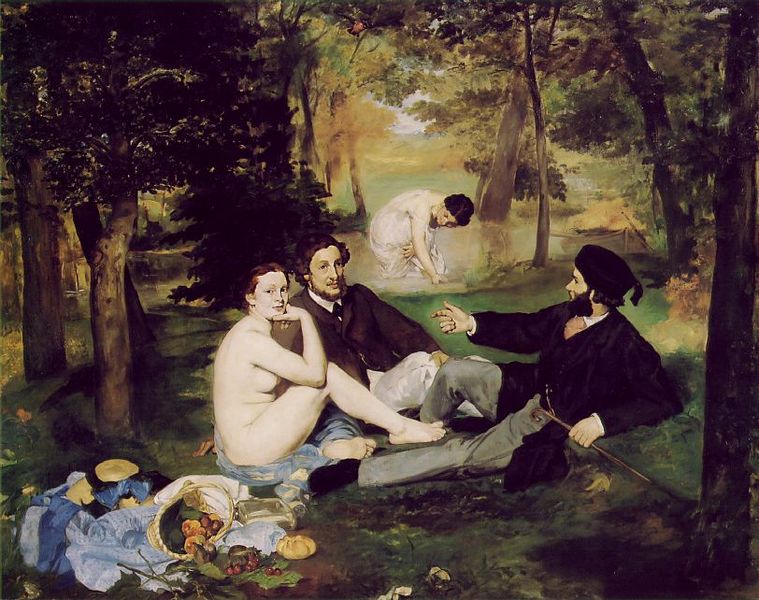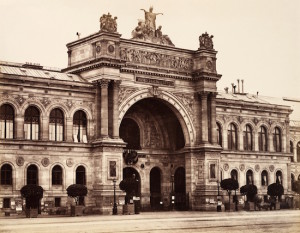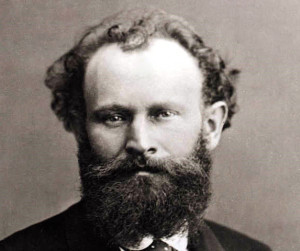Edouard Manet’s masterpiece Dejeuner sur l’herbe contains within it a recipe for modern painting. The piece was one of a number of impressionist works that broke away from classical conventions and paved the road to a daring new era. Dejeuner was denied entry to the 1863 Salon Exhibit in Paris, instead shown under the title Le Bain at the Salon des Refusés (an alternative salon established by those who had been refused entry to the official salon). Le Bain became the principal attraction, generating both laughter and scandal.
This subsequent scandal was occasioned by several reasons. One was that there appeared to be something unfamiliar or puzzling about the female nudes. Nude women in art were nothing new, however, their presence in Dejeuner’s modern setting, accompanied by clothed, bourgeois men, created an incongruity that suggested that these women were possibly prostitutes. The gaze had been shifted from a suggestive nude to a mere naked lady.
Manet also caused a stir with break from the rules of three-dimensional perspective established in Renaissance painting. Manet painted figures with a flatness, perhaps a nod to Japanese art, allowing for the paleness of the woman in the foreground to have a commanding presence against the subdued surroundings. He collapsed the relationship between background and foreground and provided no comfortable gradation between dark and light areas. Though some would disregard him as a ruiner of classical methods, there was an exacting method to the odd composition of Dejeuner sur l’herbe. Manet was purposeful, so his brazen brush marks in his works was a challenge viewers to interact with a frenetic space, instead of the smooth comfortable style per the standard of Salon painting of the time. He was asking the audience to come play with light, let down their preconceived notions about art, and breakthrough to modernity.
The modern pictorial space was taking form, and Manet was at the forefront.
Manet was paying tribute to Europe’s artistic heritage, borrowing his subject from Titian’s Concert Champêtre, and taking his composition of the central group of figures from the Marcantonio Raimondi engraving which in turn drew upon Raphael’s Judgement of Paris.
But the beauty of Dejeuner sur l’herbe is his treatment of the paint and his placement of classical elements in a contemporary scene. Many rendered the painting strange, provocative and obscene in the eyes of the public. But with the passage of time, what critics considered Manet’s obscenities, became the mark of his genius.













